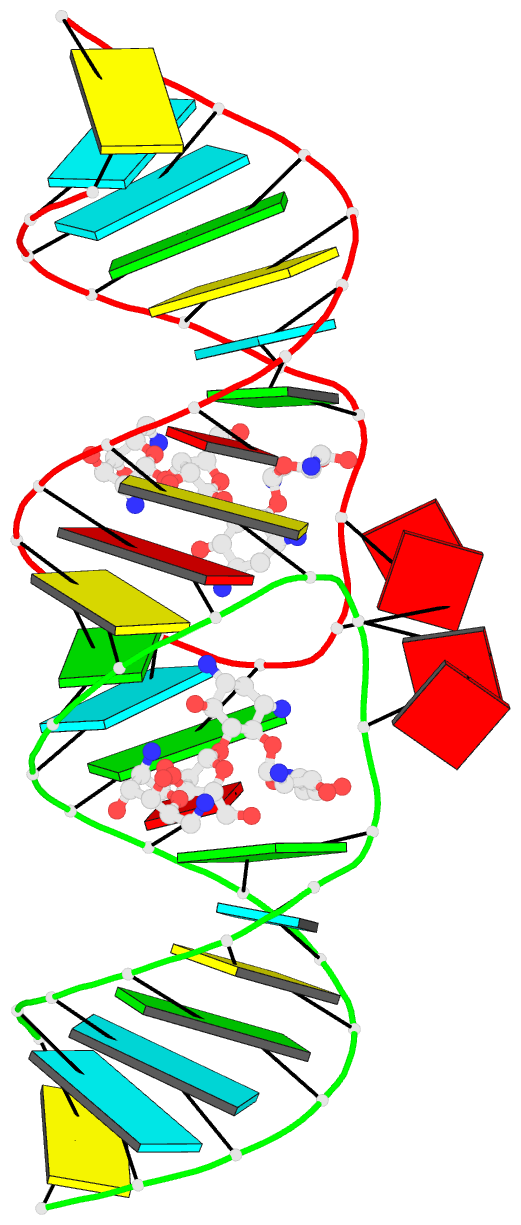Summary information and primary citation
- PDB-id
- 2fcy; DSSR-derived features in text and JSON formats
- Class
- RNA
- Method
- X-ray (2.2 Å)
- Summary
- Hiv-1 dis kissing-loop in complex with neomycin
- Reference
- Ennifar E, Paillart JC, Bodlenner A, Walter P, Weibel J-M, Aubertin A-M, Pale P, Dumas P, Marquet R (2006): "Targeting the dimerization initiation site of HIV-1 RNA with aminoglycosides: from crystal to cell." Nucleic Acids Res., 34, 2328-2339. doi: 10.1093/nar/gkl317.
- Abstract
- The kissing-loop complex that initiates dimerization of genomic RNA is crucial for Human Immunodeficiency Virus Type 1 (HIV-1) replication. We showed that owing to its strong similitude with the bacterial ribosomal A site it can be targeted by aminoglycosides. Here, we present its crystal structure in complex with neamine, ribostamycin, neomycin and lividomycin. These structures explain the specificity for 4,5-disubstituted 2-deoxystreptamine (DOS) derivatives and for subtype A and subtype F kissing-loop complexes, and provide a strong basis for rational drug design. As a consequence of the different topologies of the kissing-loop complex and the A site, these aminoglycosides establish more contacts with HIV-1 RNA than with 16S RNA. Together with biochemical experiments, they showed that while rings I, II and III confer binding specificity, rings IV and V are important for affinity. Binding of neomycin, paromomycin and lividomycin strongly stabilized the kissing-loop complex by bridging the two HIV-1 RNA molecules. Furthermore, in situ footprinting showed that the dimerization initiation site (DIS) of HIV-1 genomic RNA could be targeted by these aminoglycosides in infected cells and virions, demonstrating its accessibility.





